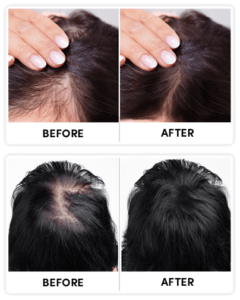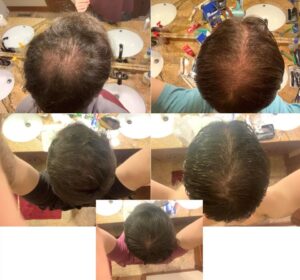The Pros and Cons of Platelet-Rich Plasma For HAIR LOSS TREATMENTs

Get to Know Platelet-Rich Plasma for Hair Loss
Losing hair can be a real blow to one's self-esteem and confidence. In the quest for solutions, Platelet-Rich Plasma (PRP) therapy has popped up as a promising candidate. But what is PRP all about, and how might it help with hair loss? In this post, we're diving into the ins and outs of PRP for hair loss, looking at its perks, possible downsides, and whether it could be the right pick for you.
What's Platelet-Rich Plasma (PRP) Anyway?
So, PRP stands for Platelet-Rich Plasma, which is basically a super-concentrated form of plasma from your own blood. It's packed with platelets, those tiny blood cells that play a crucial role in healing and regenerating tissue. These platelets release growth factors that kickstart cell growth and repair, making PRP a handy tool in regenerative medicine.
How PRP Works Its Magic on Hair Loss
Here's how PRP treatment for hair loss goes down: a small sample of your blood is drawn, processed to ramp up the platelet concentration, and then injected into your scalp. This whole thing aims to revitalize hair follicles, encouraging new growth and strengthening the strands you've got. Over time, these injections can help tackle thinning and balding by boosting hair density and overall health.
A Quick Look at PRP's History in Hair Restoration
PRP therapy has been around the block in fields like orthopedics and sports medicine, thanks to its healing powers. Its role in hair restoration is a bit newer, gaining ground over the past ten years. As research and tech advance, PRP's ability to treat hair loss has sharpened, offering a cutting-edge, non-surgical option for those on the hunt for solutions.
The Science Behind PRP for Hair Loss
Diving into Platelet Activation
Platelet activation is where PRP's healing magic starts. Once injected, these activated platelets release growth factors and cytokines, which are key players in tissue repair and regeneration. Understanding this process is crucial to grasping how PRP gets those hair follicles going.
Growth Factors: Hair Follicle Stimulators
Growth factors are proteins that are essential for signaling cells to divide and grow. In PRP for hair loss, these growth factors target hair follicles, bringing dormant ones back to life and boosting their function. This stimulation can lead to thicker, healthier hair, making PRP a valuable part of hair restoration plans.
Watch Your Hair Come Back FASTER Than You EVER Dreamed Possible

WITHOUT Expensive Medications, Lasers, or Painful Surgeries!
Learn moreWhat Clinical Studies Say
While there's plenty of word-of-mouth praise, clinical studies offer a more solid look at how well PRP works for hair loss. Several studies show positive results, with participants noticing better hair density and thickness. However, outcomes can vary, so it's crucial to chat with a qualified healthcare provider to see if it's a good fit for you.
Why Consider PRP for Hair Loss?
It's Natural and Non-Surgical
One of the biggest draws of PRP for hair loss is its natural approach. Since it uses your own blood, the risk of allergic reactions or side effects is low, offering a non-surgical alternative to more invasive procedures. This makes PRP appealing for those looking for a less intrusive way to restore their hair.
Little Downtime, Quick Recovery
PRP treatment is pretty quick and usually involves minimal downtime. Most folks can get back to their usual activities shortly after the procedure. This convenience is a big plus for busy individuals, making it easy to slot PRP therapy into their routines without much hassle.
Tailored Treatment Plans
PRP therapy is flexible, allowing for treatment plans tailored to individual needs. Depending on the extent of hair loss and desired results, sessions can be adjusted in frequency and duration. This customization ensures each patient gets a personalized approach, maximizing PRP's potential benefits.
Things to Keep in Mind About PRP for Hair Loss
Results Can Vary
One challenge with PRP for hair loss is the variability in results. While some folks see significant improvements, others might notice only modest changes. Factors like the root cause of hair loss and individual biological responses play a role, highlighting the need to manage expectations.
Cost and Insurance Concerns
PRP treatment can come with a hefty price tag. As a relatively new therapy, it's often not covered by insurance, meaning patients have to cover the costs themselves. Prices can vary widely based on the provider and location, so it's important to weigh the costs against potential benefits.
Top Trichologist: Do This To Your Scalp To Regrow A Full Head Of Hair

Completely natural and dirt cheap way that makes it possible for you to finally regrow all your hair back.
Watch free special videoMultiple Sessions Required
PRP therapy usually requires multiple sessions to get the best results. While this can boost the treatment's effectiveness, it also means more time and money. Patients should be ready for a series of treatments over several months, which can be a deal-breaker for some.
Who Should Consider PRP for Hair Loss?
Best Suited for Certain Hair Loss Types
PRP therapy works best for certain types of hair loss, like androgenic alopecia. It might not be suitable for those with hair loss due to medical conditions or scarring. A thorough evaluation by a healthcare provider can help determine if PRP is the right fit based on your specific type of hair loss.
Age and Health Factors
While PRP is generally safe for most ages, certain health conditions might affect its suitability. People with bleeding disorders or on blood-thinning meds might not be ideal candidates. It's crucial to discuss your medical history and any health conditions with your provider before starting PRP treatment.
Pre-Treatment Checks
Before jumping into PRP therapy, a comprehensive evaluation is key. This might include blood tests and a detailed medical history to ensure you're a suitable candidate. These evaluations help tailor the treatment plan to your needs, increasing the chances of success.
Weighing PRP Against Other Hair Loss Treatments
PRP vs. Minoxidil and Finasteride
Minoxidil and finasteride are well-known hair loss treatments with proven track records. However, they work differently than PRP. Minoxidil stimulates hair growth topically, while finasteride tackles hormonal causes. PRP offers a more holistic approach by directly targeting hair follicles, making it a great addition to these meds.
PRP vs. Hair Transplant Surgery
Hair transplant surgery is more invasive compared to PRP. While transplants offer permanent results, they come with significant recovery time and costs. PRP is a non-surgical alternative, perfect for those wanting less invasive options with shorter recovery.
Why The Ancient Samurai Warriors Never Lost Their Hair…

guaranteed to work for any men or women out there...
Learn moreMixing PRP with Other Therapies
PRP can be combined with other hair loss treatments for better results. For instance, using PRP alongside minoxidil or finasteride offers a multi-faceted approach to hair restoration. Combining treatments can maximize benefits and potentially speed up achieving desired outcomes.
Getting Ready for PRP Treatment
Consultation and Setting Expectations
The first step in preparing for PRP is a chat with a qualified provider. During this meeting, you'll discuss your hair loss concerns, expectations, and possible outcomes. Understanding what PRP can realistically do is crucial for setting the right expectations and ensuring satisfaction.
Pre-Treatment Tips
Before your PRP session, your provider will give specific instructions to follow, like avoiding certain meds, caffeine, and alcohol in the days leading up to the procedure. Sticking to these guidelines helps optimize the treatment process and improve the chances of success.
The PRP Procedure Explained
The PRP procedure is pretty straightforward, usually taking about an hour. After your blood is drawn and processed, the PRP is injected into targeted scalp areas. Some might feel mild discomfort during the injections, but it's generally well-tolerated and short-lived.
Wrapping Up: The Pros and Cons of PRP for Hair Loss
Key Takeaways
Platelet-Rich Plasma therapy offers a promising, non-surgical option for tackling hair loss. With its natural approach, minimal downtime, and customizable plans, PRP is an attractive choice for many. However, variability in results, cost, and the need for multiple sessions are important factors to consider.
Making the Right Choice
Choosing a hair loss treatment involves weighing all available options. Consulting with a knowledgeable provider and discussing your needs and concerns will help ensure you make an informed decision that aligns with your goals and expectations.
The Future of PRP Research
As research on PRP therapy evolves, we can expect new insights and advancements. Ongoing studies aim to refine techniques and enhance PRP's effectiveness for hair loss. Staying informed about these developments can help you make the best choices for your hair restoration journey.






